Disclosure: Meeple Mountain received a free copy of this product in exchange for an honest, unbiased review. This review is not intended to be an endorsement.
Everything about every single Friedemann Friese game looks similar when you consider each green game box with dry cover art and a game title that (usually) starts with the letter F.
At the behest of my editorial boss, Meeple Mountain founder Andy Matthews, I stopped by the 2F-Spiele booth at SPIEL ‘22 to pick up a copy of Findorff, Friese’s newest game, for his personal collection. While I was at the booth, I went ahead and grabbed a copy for myself.
I added Findorff to the 40-or-so review copies I hauled home from the show. Fast forward to the moment I whipped out the rulebook for Findorff and then did a dummy-hand three-player setup to walk through the game.
Two turns into that walkthrough, I knew we had something here. After four plays (two solo, one three player, and one four-player game), I know something else: this has replaced Power Grid as the best Friedemann Friese game I have ever played.
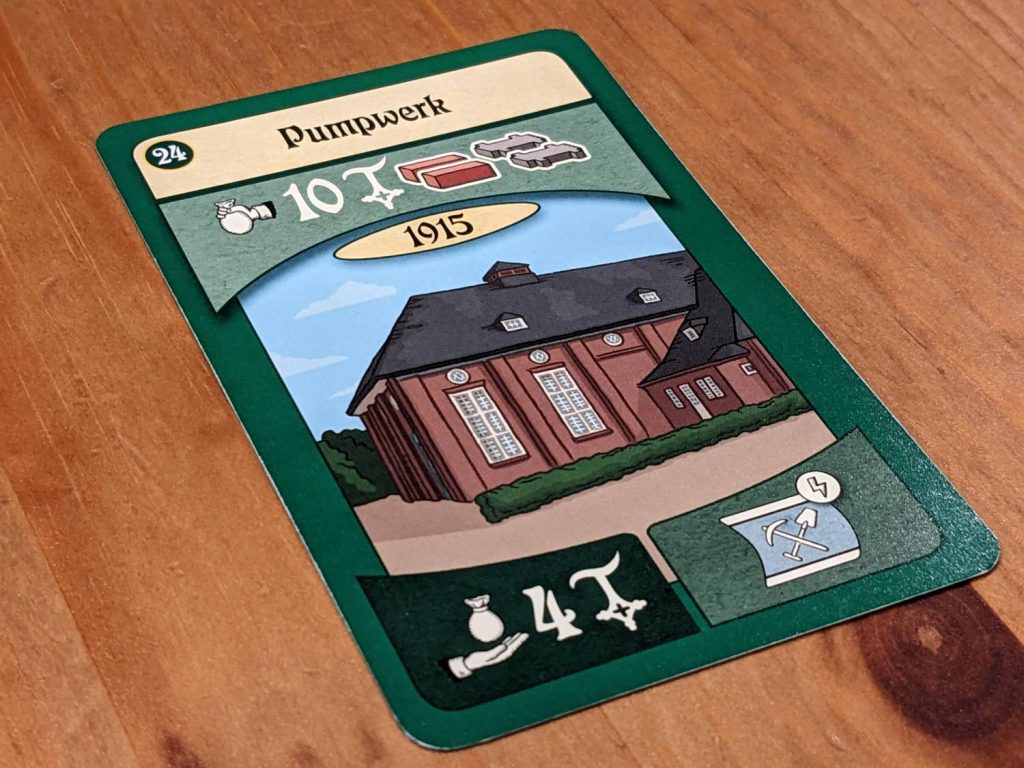
Downtime? Zero
Findorff is one of the 23 districts of a German town called Bremen, the birthplace of Friese. Findorff (the game) is based on the history of this district with players producing resources to build up the town from the early 1800s to the early 1900s. This is done by being the most efficient at producing brick for raising structures, producing rail to build the town’s connections to the rest of Europe, and extracting, then producing, peat for cash.
The heart of the game’s scoring is tied to raising structures: each of the 25 structures in the game is a card detailing its cost and rewards for adding the card to the game. But here’s where Findorff elevates its play from standard Euro fare (efficiency engine-building mechanics): each time a player raises a structure, they add a small tile to the board representing the building.
It’s purely window dressing to do this, but I’m surprised how much it affects the feelings of the other players at the table. Adding these tiles also turns the bland beige board from devoid of character to “look at that cute small town!” in a flash. By the end of play, you’ll have added track to all the game’s pre-printed rail spaces (this is the game’s clock, as filling the track spaces ends the game once all players have had equal turns), small wooden houses where local residents now reside, and the aforementioned tiles representing things like schools, housing communities, and train stations.
All this happens with one of my very favorite action selection mechanics. There are just four actions: Purchase, Hiring, Production, and Sale. Each player has a player board with these four action spaces in order from top to bottom. When taking an action, a player must move 0-3 spaces down the track, looping back to the top of the track after taking a cleanup step.
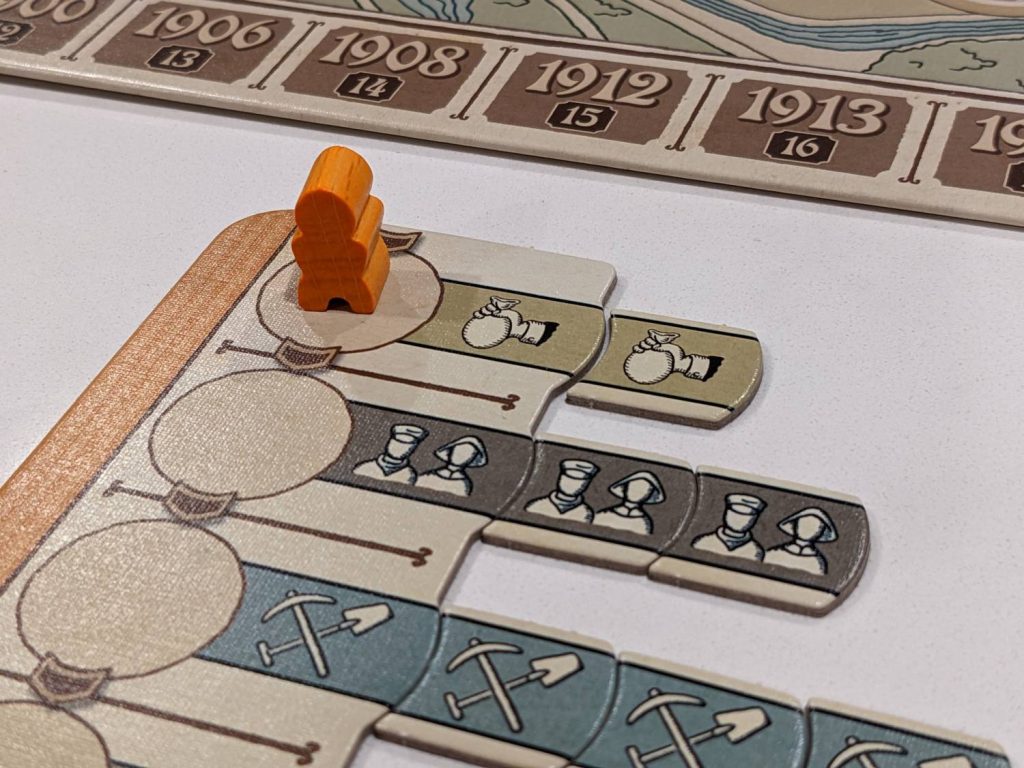
Depending on the round, this means that players will likely be doing different things every turn, but every action they can take is fast…like, really fast. Findorff moves so fast that it’s been fun just to hear the words players use to describe how fast it is moving! (“Quick” comes up often, but “snappy” is still my favorite.)
Those actions can be augmented by buying action tiles during the Purchase step. At the beginning of play, each turn for a player allows them to take the chosen action a single time. But players can make these actions more efficient by buying an action tile which they add to their player board. So the next time they take, say, the Hiring action, they could hire two workers instead of just one. (Action tiles are priced in ascending order, so buying them while they are cheap becomes a fun race.)
Production lets players utilize their production tiles to extract peat to sell to a market that looks a lot like the market you may recognize from Power Grid. Later, players also use the Production action to produce using rail and brick using production tiles bought during previous Purchase actions. The produced goods sit on a warehouse card with room for 10 goods, goods that will be used for raising structures later.
You could sell rail and peat during the Sale step to earn cash. During Sale, you can also build houses that consume peat from that public market and which help with income during the cleanup step.
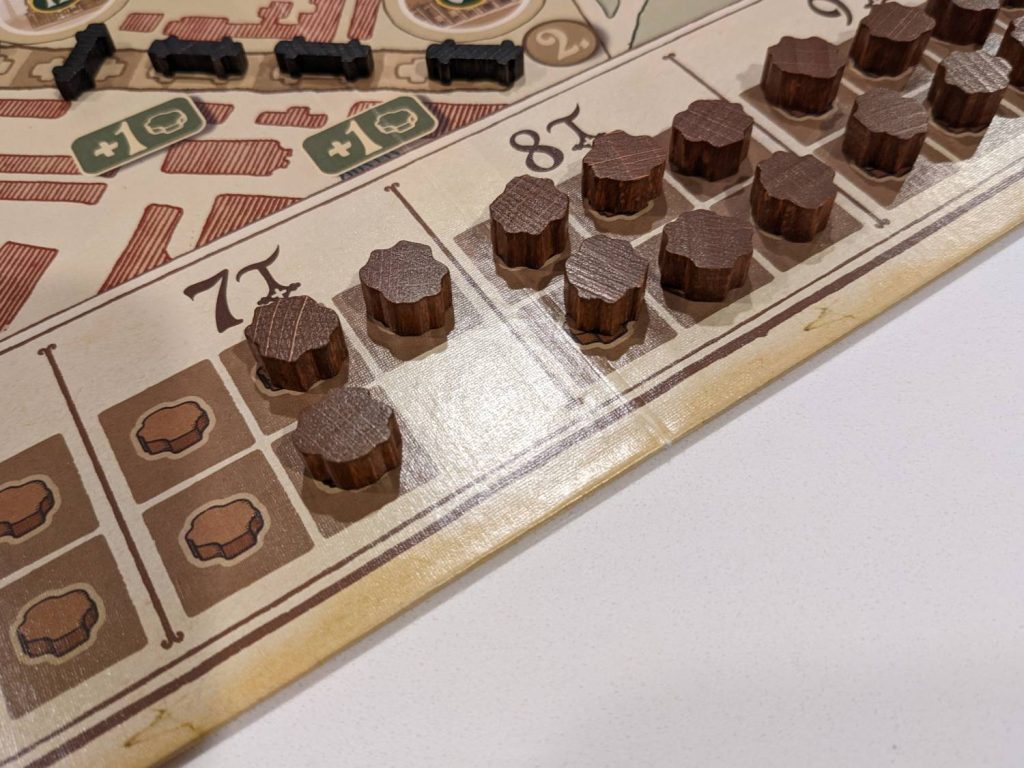
Bureaucracy
Every time a player moves through the bottom of their player board, they pause to do a round cleanup. That cleanup, known as Bureaucracy, only applies to the active player, which I absolutely love.
Players will get a little income from any pairs of built houses and active workers, then add rail from the supply to the rail spaces running through the main board. Some peat will come off the market too, at a rate of one peat per house that the active player owns. Then, someone dies.
No, seriously.
During Bureaucracy, one of your workers passes away (old age is something, right?), meaning that players will have to constantly stay in front of this by having enough workers each round. Players then get income from any structures they raised in previous turns before moving their action selection piece (the foreman) to another action.

To ensure that players don’t just take an action, then move through Bureaucracy before getting back to that same action, players can only move 0-3 spaces each turn (out of the four spaces in total). Mastering this puzzle of actions is the heart of Findorff, the heart of which is beating quickly because the game plays so fast.
Scoring is simple, and I like that there’s no mystery to how the game should end. Each structure card is worth 50 points, no matter how much money and/or resources that card costs a player to build. Building cheap and often is vital to success in Findorff, because there’s basically no other scoring (a point for every leftover coin, four points for leftover bricks, 10 points for leftover rails, and market price for leftover peat).
And while I don’t always love the tiebreaker in some games, I love the tiebreaker in Findorff: whoever has the least amount of money leftover wins. You’re supposed to be spending every last dollar (whoops, “thaler”) to make Findorff a beautiful place to live, so leftover cash just looks selfish.
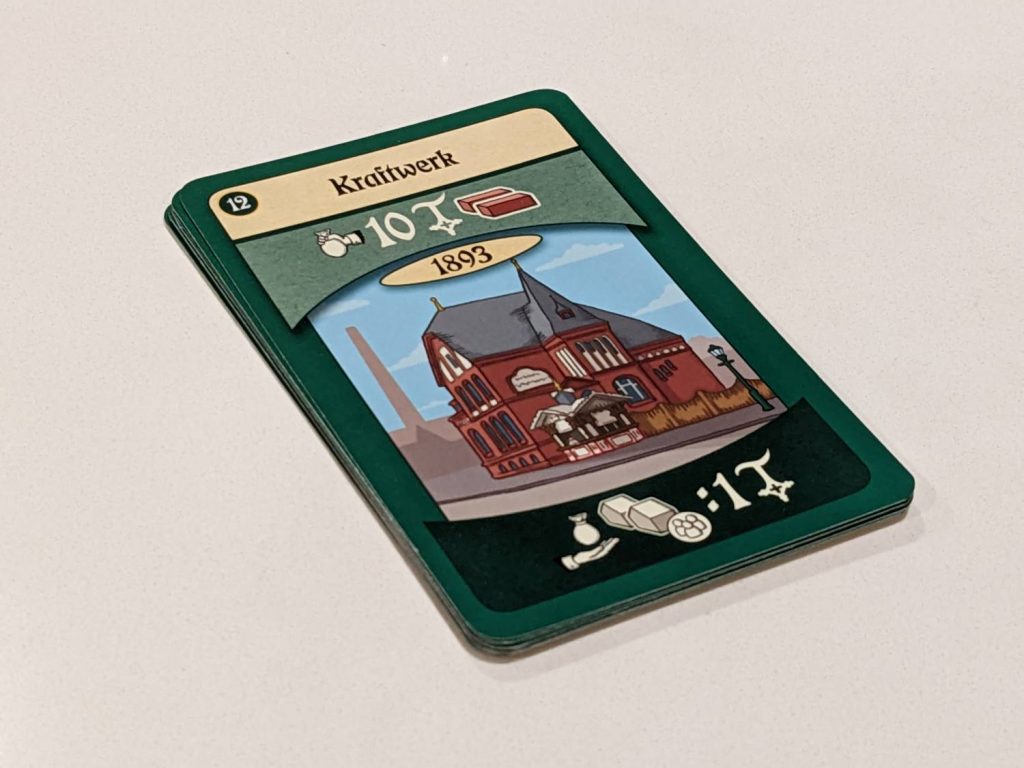
I Love It
Findorff is my kind of efficiency engine experience, an economic puzzle that plays in under 90 minutes regardless of player count.
Certainly, it starts with the downtime—in my three-player game, sometimes you would take a second turn in the same minute that your turns began. You know what you have to do, it’s easy to read and react to the changing marketplace, and you can build a long-term strategy in a game that doesn’t have much of a long term.
The back of the rulebook explains the powers of the 25 structures in the game, so you’re never lost about what each card does and/or its iconography. (That said, I wish there was a player aid for detailing what a player can do in each of the four main actions.) The timer is right on the board, thanks to the railbed spaces. The components are excellent. I love the way the board changes from plain to (a bit more) vibrant by game end.
Because the map doesn’t get larger or smaller with player count, the game’s time doesn’t change much. With experienced players, you could knock out a five-player game of Findorff in an hour, so the game never overstays its welcome. There are pre-set structures for beginners to start with in hand and the draft variant means that experienced players can sort through cards to their liking, to plot out their strategy. Each player’s Bureaucracy cleanup step means that watching the clock wind down may look slightly different each game.
Findorff’s gameplay loop is excellent. It’s not as deep as Power Grid, and as a puzzle, I think it’s one that is potentially solvable. I believe that expert players will want to try something else after the seventh or eighth play of Findorff. Solo play is an option here, as a high-score contest. Depending on the structure draw, I can already see ways to score 800+ points because the board, action tile prices, and lack of surprises mean that there’s not much left after attempting a speedrun a few times.
That’s OK for me, though. As a game that will come off my shelf a few times each year, I’m fine with something this fun, this accessible, and this fast. Findorff is strong work and I’m glad to have it in my collection!


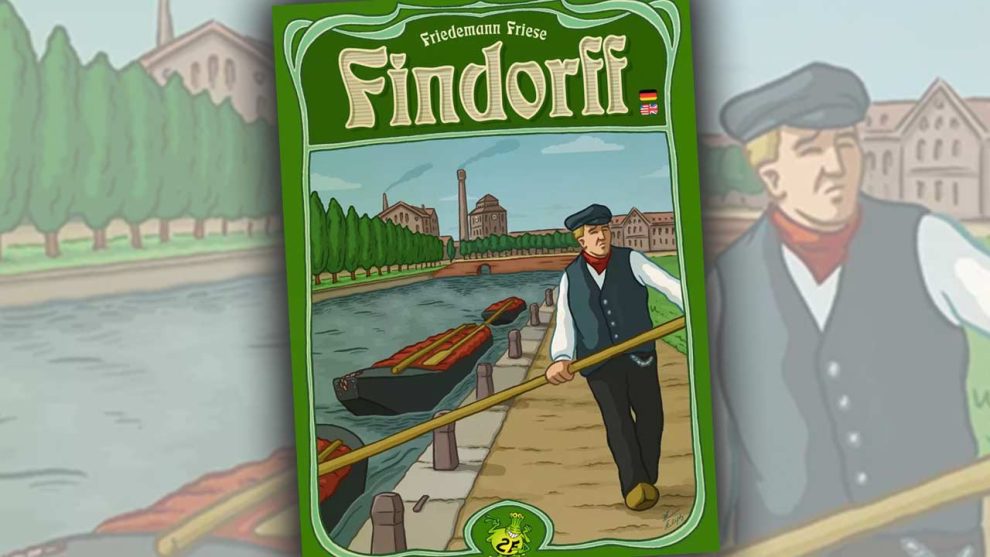

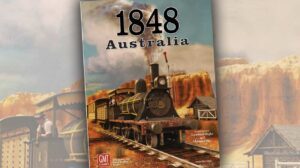







Great review! I look forward to checking it out. Have you played Faiyum? It also has a city building aspect, along with a cleanup action, Administration instead of Bureaucracy. But the games seem very different in how they play out. Thanks.
Hey there! I have not played Faiyum but I am adding this to my list. Excited to explore more games from FF!
I own both Faiyum and Findorff. Faiyum has a bit more going on and is generally more interesting than Findorff, but has a correspondingly higher play time. You could conceivably finish a game of Findorff in an hour and a half in some cases?
Interesting. From Justin’s review, I thought there might be more going on in Findorff over Faiyum. I look forward to hearing a more in depth comparison. But it sounds like there’s room in my collection for both. Thanks!